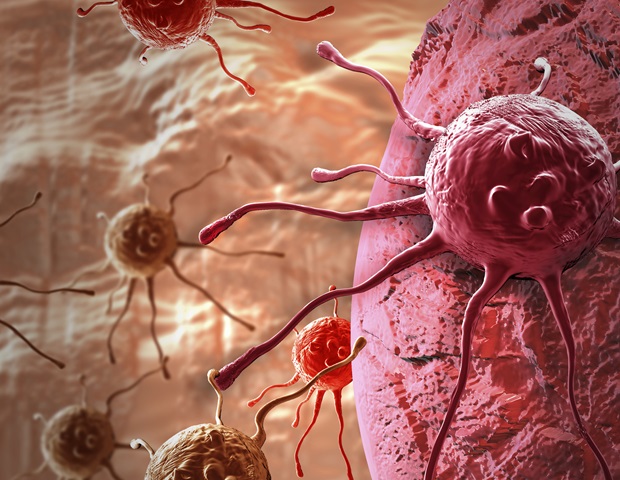In an evolving health landscape, emerging research continues to highlight concerns that could impact everyday wellbeing. Here’s the key update you should know about:
Gastric cancer remains a major global health challenge, characterized by high mortality and limited therapeutic efficacy, especially in advanced stages. With conventional treatments like surgery and chemotherapy often yielding suboptimal outcomes and significant side effects, there is an urgent need for safer and more effective alternatives. Scleromitrion diffusum (Willd.), a traditional Chinese medicine (TCM) herb with a long history of use in oncology, has shown promising clinical potential against gastric cancer. This review systematically explores the bioactive components of S. diffusum and their multi-target mechanisms, integrating millennia of TCM wisdom with modern pharmacological evidence to provide a molecular basis for its anticancer efficacy.
Active anticancer compounds of S. diffusum
The therapeutic potential of S. diffusum is attributed to its diverse bioactive constituents, which include flavonoids, anthraquinones, terpenoids, sterols, and polysaccharides. Key flavonoids such as quercetin, kaempferol, and their glycosides exhibit potent anticancer activity by inhibiting proliferation, inducing apoptosis, and suppressing metastasis. Anthraquinones like 2-hydroxy-3-methylanthraquinone promote mitochondrial apoptosis, while terpenoids such as oleanolic acid and ursolic acid target oncogenic signaling pathways. Polysaccharides from S. diffusum enhance immune function by activating lymphocytes and macrophages, providing a dual mechanism of direct tumor suppression and immune potentiation.
Molecular pathways of S. diffusum in gastric cancer intervention
S. diffusum exerts its anticancer effects through a multi-pronged approach, targeting several critical pathways in gastric cancer pathogenesis:
-
Induction of apoptosis: Flavonoids and anthraquinones activate both intrinsic and extrinsic apoptotic pathways. For instance, quercetin enhances caspase-3/9 activity and modulates the AMPK/mTOR and PI3K/AKT pathways, while kaempferol inhibits hTERT expression and telomerase activity, leading to programmed cell death.
-
Promotion of ferroptosis: Quercetin induces ferroptosis by elevating lipid peroxidation and suppressing the NRF2/XCT antioxidant axis, offering a novel mechanism to combat gastric cancer.
-
Inhibition of proliferation: Compounds like quercetin and oleanolic acid arrest the cell cycle at G0/G1 or G2/M phases by downregulating cyclin D1, CDK4, and MYC expression, thereby curbing uncontrolled cell division.
-
Suppression of invasion and metastasis: S. diffusum reverses epithelial-mesenchymal transition (EMT) by upregulating E-cadherin and downregulating vimentin and N-cadherin. Quercetin further inhibits metastasis by interfering with the uPA/uPAR system and NF-κB signaling.
-
Inhibition of angiogenesis: Flavonoids such as quercetin and kaempferol suppress VEGF expression and signaling, disrupting tumor vascularization and nutrient supply.
-
Enhancement of immune function: Polysaccharides and terpenoids modulate immune responses by activating dendritic cells, natural killer cells, and cytokine production, thereby creating an antitumor immune microenvironment.
Future research directions
Despite significant progress, several challenges remain. The poor solubility and bioavailability of active compounds like quercetin and ursolic acid limit their clinical application. Future research should focus on:
-
Structural modification of compounds to enhance efficacy and stability.
-
Development of nano-formulations and liposomal delivery systems to improve bioavailability.
-
Exploration of synergistic drug combinations, including integration with immunotherapy, to maximize therapeutic outcomes.
Conclusion
Scleromitrion diffusum represents a promising candidate for gastric cancer therapy, validated by both traditional use and modern scientific evidence. Its multi-compound, multi-pathway approach aligns with the holistic principles of TCM while offering mechanistic insights for precision oncology. By bridging traditional knowledge with contemporary research, S. diffusum exemplifies the potential of natural products in developing innovative, effective, and safer anticancer strategies. Future efforts should prioritize translational studies to harness its full clinical potential.
Source:
Journal reference:
Zhang, Y.-X., et al. (2025). Pharmacological Insights into Scleromitrion diffusum (Willd.) Against Gastric Cancer: Active Components and Mechanistic Pathways. Oncology Advances. doi.org/10.14218/ona.2025.00011
